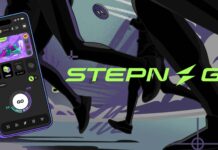[ad_1]
This post was originally published on bitsong
$BTSG Airdrop — A Few Tips to Get the Most From Your Tokens

Dear Community,
Firstly, thank you for all of your feedback following the recent $BTSG airdrop! Since the airdrop completed on January 1st, we’ve had lots of questions and interactions about how to access and manage the newly-acquired BTSG tokens. We’ve decided to consolidate all the information together into one helpful article that provides an overview of the airdrop, how to use the new bridge, and all the ways BTSG can be used inside and outside the BitSong ecosystem.
On December 29th, we announced the parameters and details of the airdrop, and determined that there were 120.864 addresses that are eligible to receive a share:
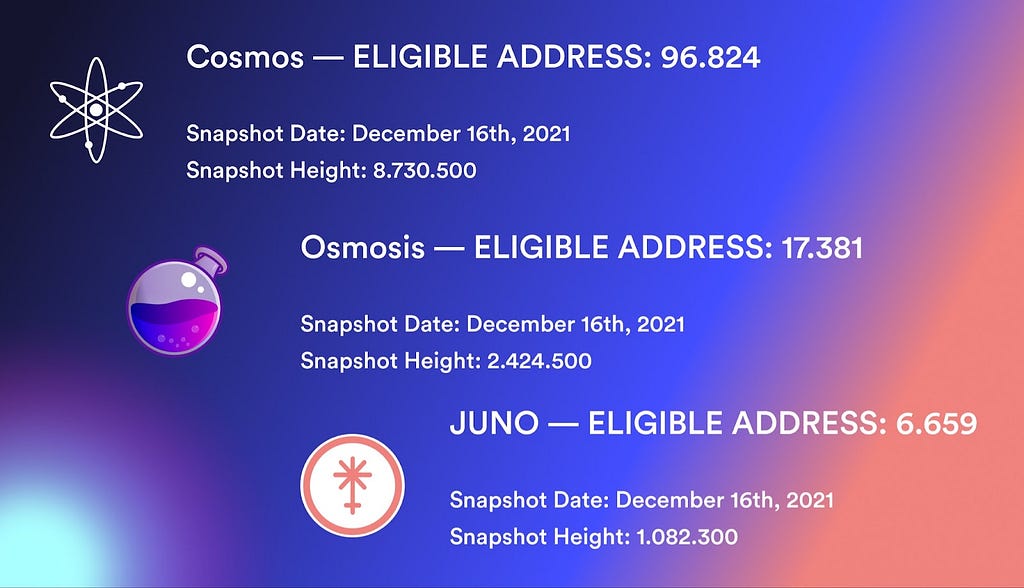
Total Airdropped Addresses: 120.864
Total Bitsong Tokens airdropped 10 million $BTSG
On January 1, we completed the airdrop!
The airdrop was conducted using the Inter-blockchain communication protocol, IBC, which means that the $BTSG tokens were directly airdropped into the eligible addresses of Cosmos, Osmosis and JUNO stakers.
This is a novel way in which we have decided to use IBC for the benefit of users, meaning that for the first time, each eligible recipient doesn’t need to go through the process of claiming their tokens. What recipients need to be aware of though, is that in order to be able to use the tokens, they will need to pass them through the Bridge that we have created specifically for this purpose.
The Bridge is an essential tool in “activating” your tokens for use in the IBC ecosystem of blockchains. For you to be able to use your $BTSG, (for example, to send them to Osmosis for bonding in a pool or trading,) you first need to route them via the Bridge to the BitSong blockchain, and then you can send them via the Bridge to the Osmosis, Cosmos, or Juno blockchains.
If you attempt to send your airdropped tokens elsewhere without first using the Bridge to send them to BitSong, you will lose them as the token you get on the other side is different from the native $BTSG.
Now, let’s walk you through on how to use the Bridge.
Step 1: Connect your Keplr wallet to BitSong blockchain
Ensure that your Keplr wallet is connected to the BitSong blockchain, by visiting https://wallet.bitsong.io, selecting “Keplr Browser extension” and approving the connection to BitSong blockchain via Keplr.
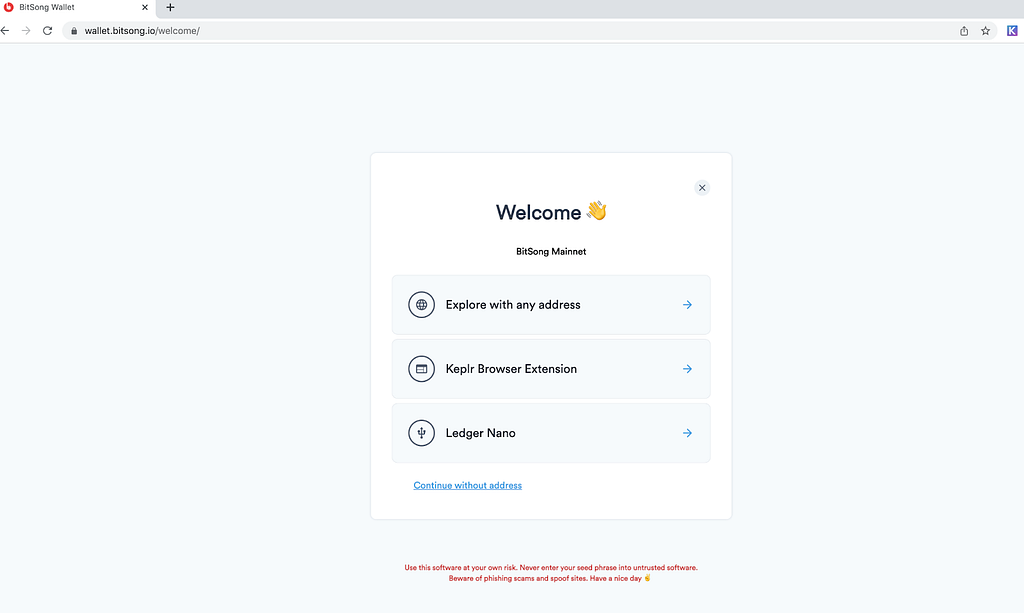
Step 2: Access the bridge and transfer your tokens to the BitSong wallet
Access the bridge here https://bridge.bitsong.io/
The interface is straightforward — you simply select the network you are transferring from (i.e. the network where you have received your $BTSG tokens) to Bitsong along with the addresses and the amounts.
Attention:
For your first Bridge transaction of the airdrop tokens, please select the “From” blockchain where your airdrop wallet is located (meaning either Cosmos, Osmosis or Juno, depending on where you have received your airdropped tokens), and choose “BitSong” in the “To” field.
The “From address” field is populated automatically with your “airdropped $BTSG wallet”, while for the “ To address” field, you will need to input your BitSong address manually.
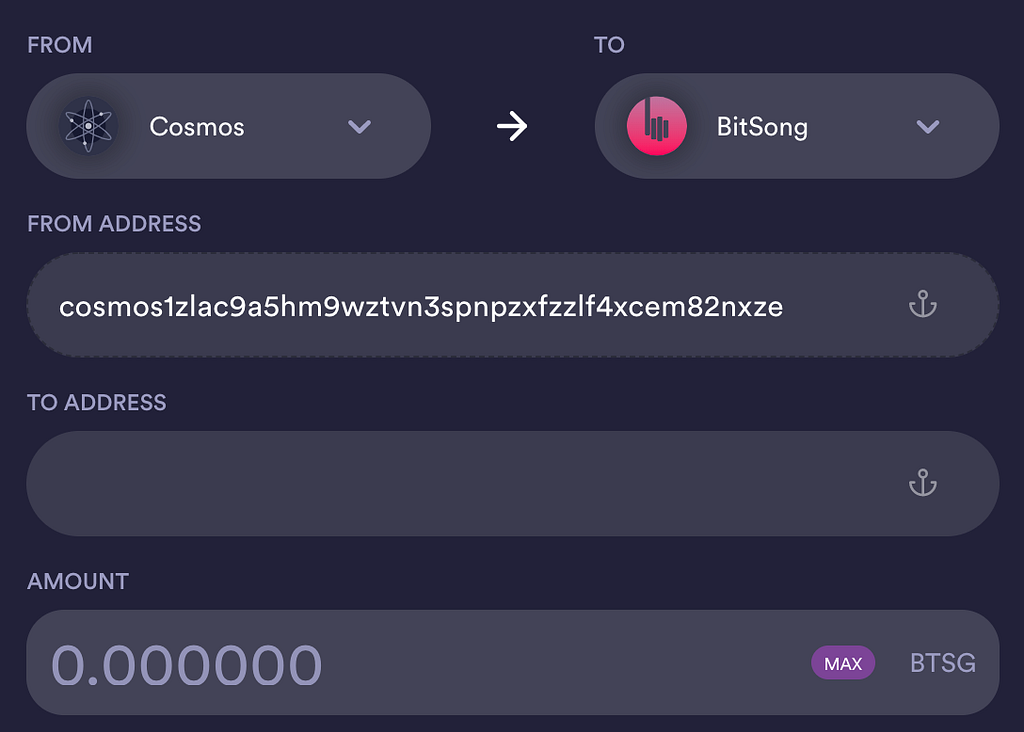
The transfer may take a few moments to show up.
As a reminder, all airdropped $BTSG were sent to the relevant Cosmos, Juno, or Osmosis addresses. The airdrop may not appear automatically in Keplr depending on your settings. To ensure your settings are correct, use the hamburger menu on the top left of the Keplr screen and choose “Settings.” Make sure the IBC Transfers view is toggled to “on,” per the below:
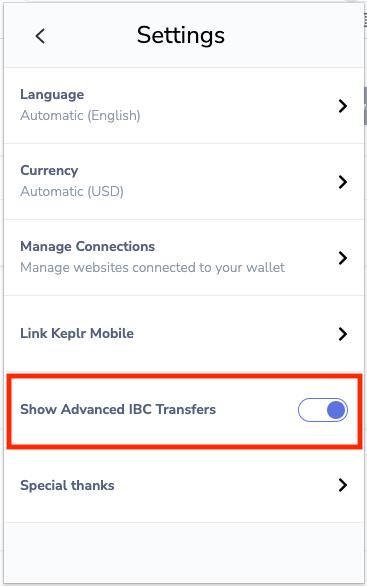
Now you’re all set and your $BTSG tokens should be available in your BitSong wallet! Time to stake or pool! Details below.
What Can You Do With Your BTSG?
Now that you have your $BTSG tokens in your BitSong wallet, what can you do with them? Here are a few suggestions to help you get started:
1. Staking
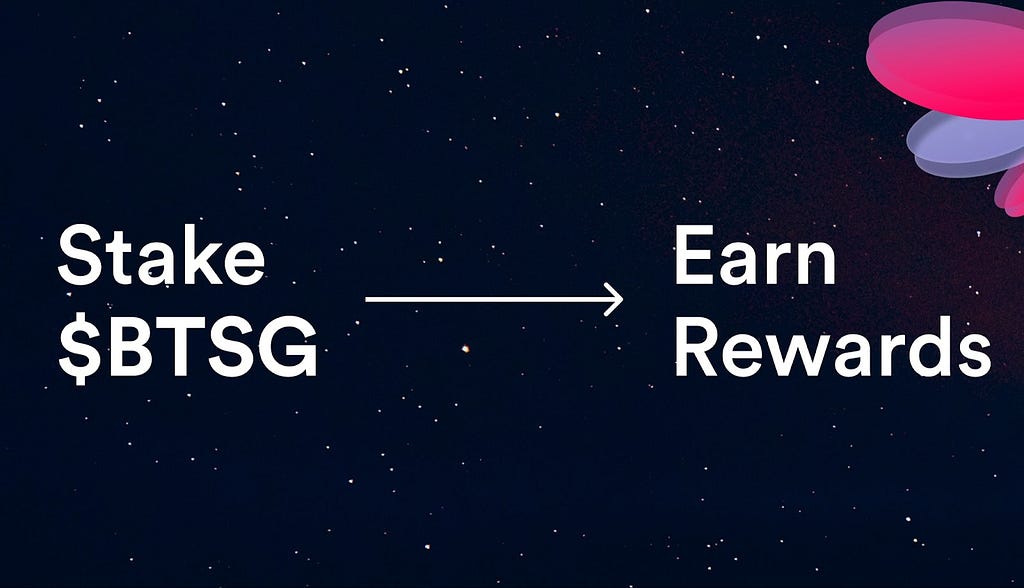
You can stake your $BTSG to a Validator on the BitSong network for a share of rewards. We’ve put together a helpful “Guide to Staking BTSG” to walk you through the process, and you can stake either via the BitSong wallet or via Cosmostation Keystation — https://wallet.cosmostation.io/bitsong.
Staking is transparent and you can always view your stake and the blockchain activity at any of the BitSong block explorers:
2. Liquidity Pools
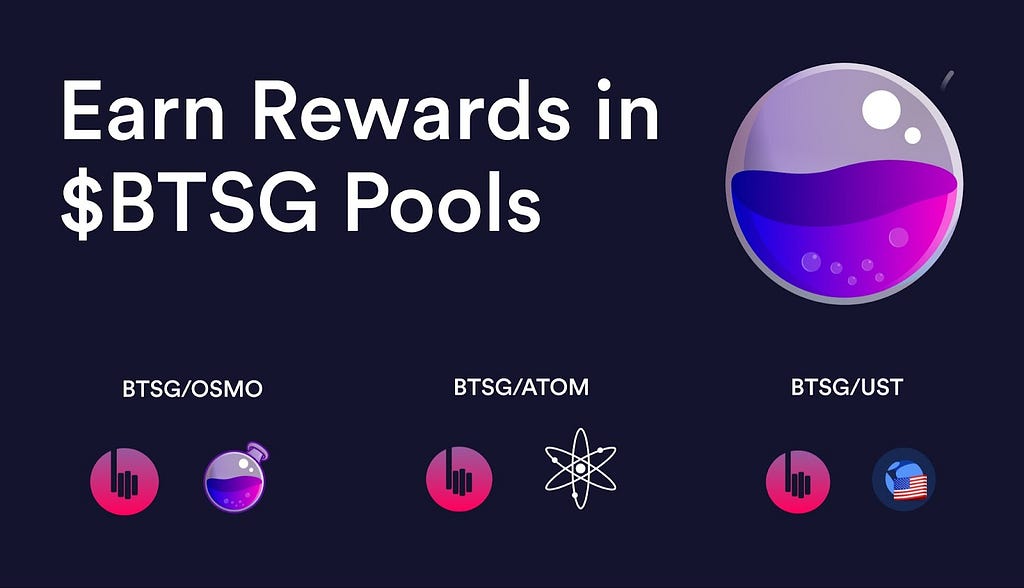
BitSong currently operates three incentivized $BTSG pools on Osmosis. These are:
The rewards for providing liquidity to the $BTSG pools are currently some of the highest in Osmosis! For example, if you provide BTSG/UST liquidity to pool #592, you can earn yields of up to 170%/year. If you have the collateral to be able to provide liquidity for both sides of the token pair, then you’ll also be eligible for additional incentives in $BTSG and $OSMO for the whole 2022 as per our recent announcement.
You can find a guide for adding liquidity to Osmosis pools here.
3. HODL! For future benefits and exciting releases
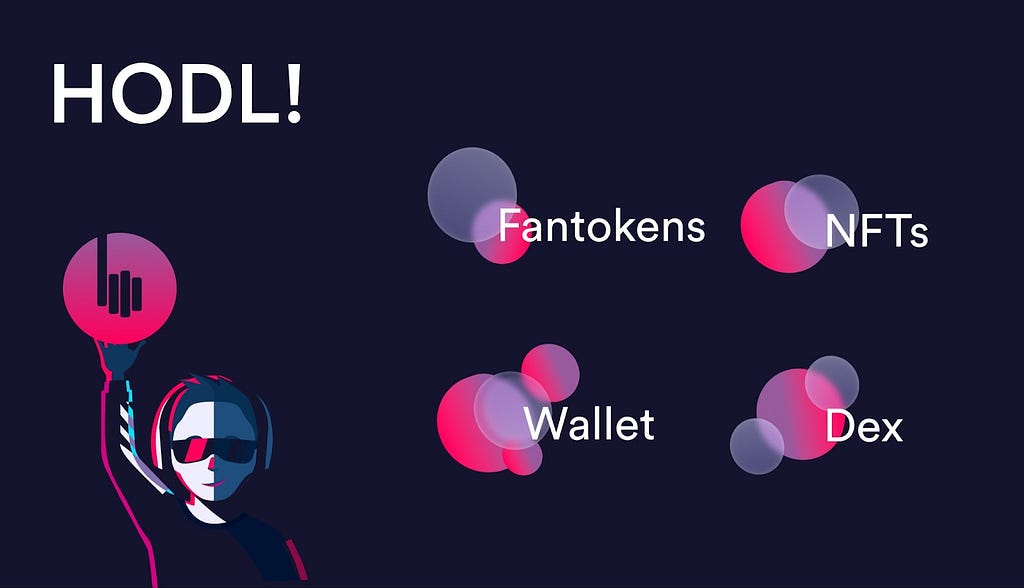
BitSong is currently in a pivotal phase of development. Our next planned releases will bring Fan Tokens, NFTs, a Marketplace, a wallet extension, and more to the BitSong ecosystem. As a holder of $BTSG, you’ll gain privileged access to these tools and features as well as future benefits as a $BTSG token holder (more details to be shared soon).
If you want to learn more, you can join the BitSong testnet where we test all our new modules and features prior to mainnet launch.
4. Swap
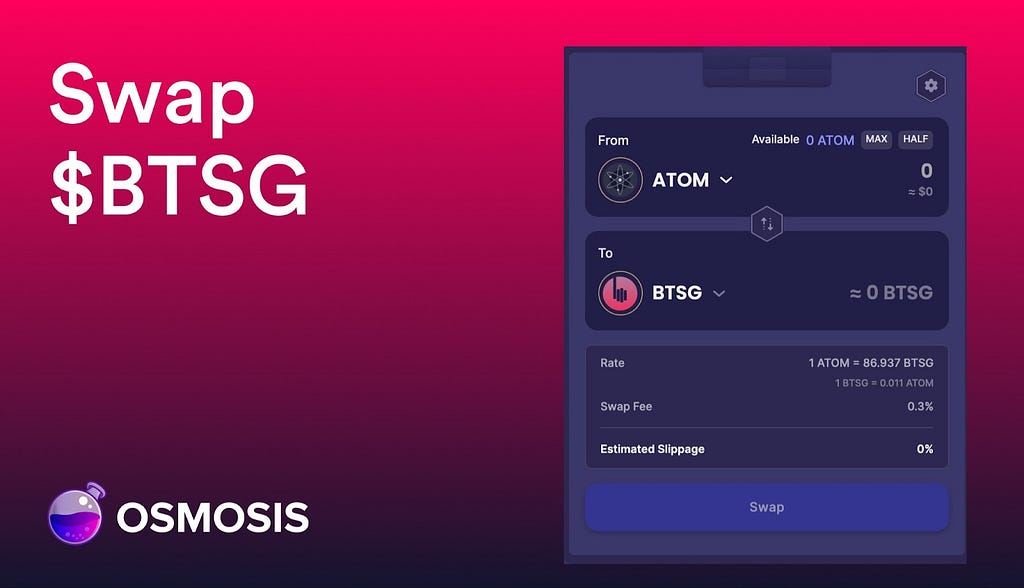
We have so much coming up in 2022 that we urge everyone to hold onto their $BTSG, even if they do nothing else. But if you decide you don’t want all the benefits of being a $BTSG holder now or in the future, then there is always the option to swap your tokens. You can trade $BTSG for OSMO, ATOM, or UST via any of the liquidity pools on Osmosis, with a low swap fee.
However, we hope you’ll choose to stay with us as a $BTSG holder, because 2022 is set to be a stellar year for BitSong! Over the last three years, the BitSong team has proven our ability to deliver on a roadmap and the results are now beginning to make themselves visible in our user metrics.
BitSong in numbers
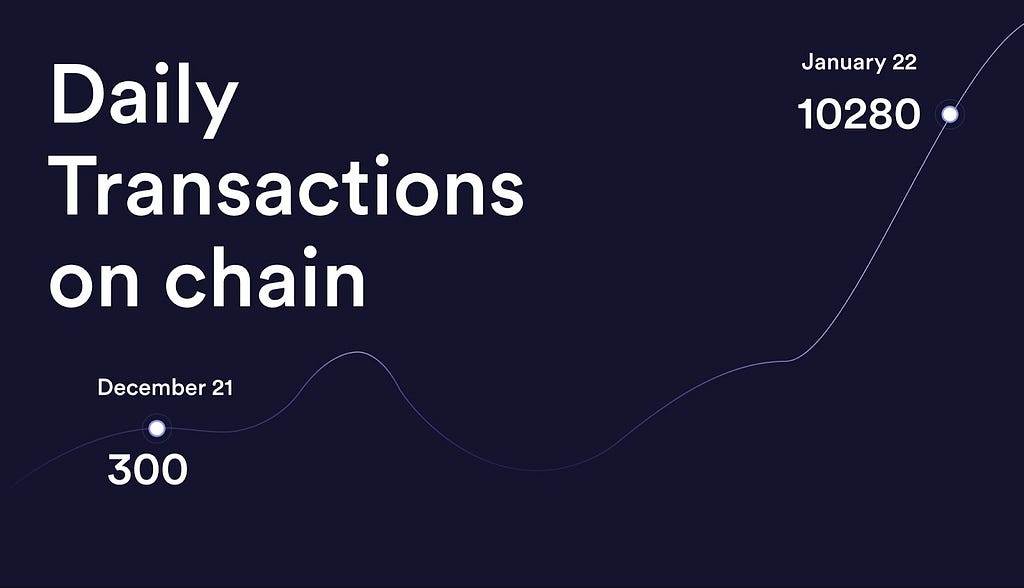
Since the Big Bang upgrade went live in late October, we’ve made some impressive strides. For example, the average of daily transactions up to the beginning of December 2021 were around 300 per day, reaching a peak of 10,280 transactions on January 1st 2022.
What’s more, the number of accounts is growing steadily in the last month, with the number of daily users increasing by an average of 10.14%, while the number of delegators staking their $BTSG to a Validator increased by 49.6%.
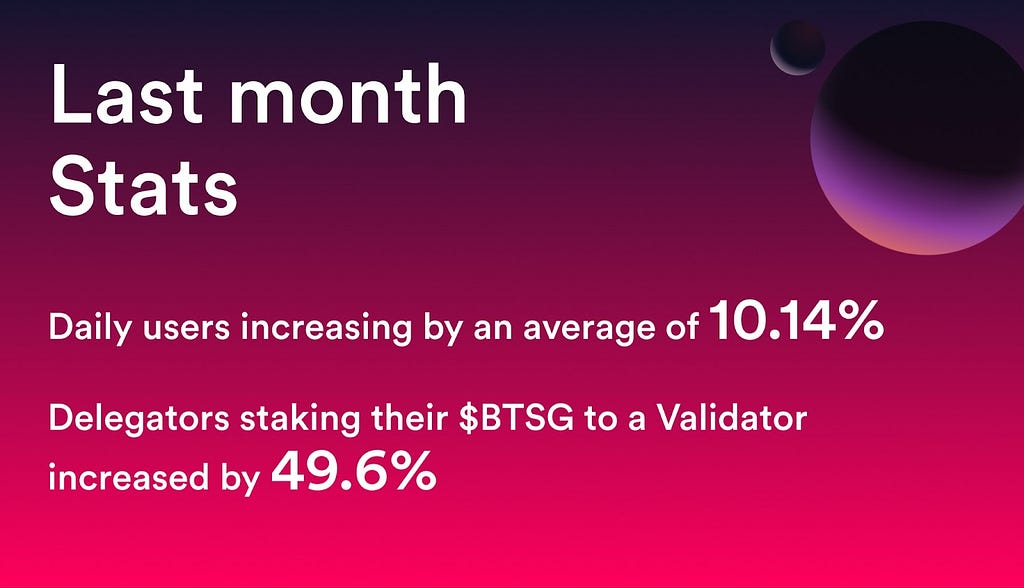
In the past seven days, BitSong has reached 24,000 transactions in IBC, ranking as the eighth largest blockchain by number of transactions.
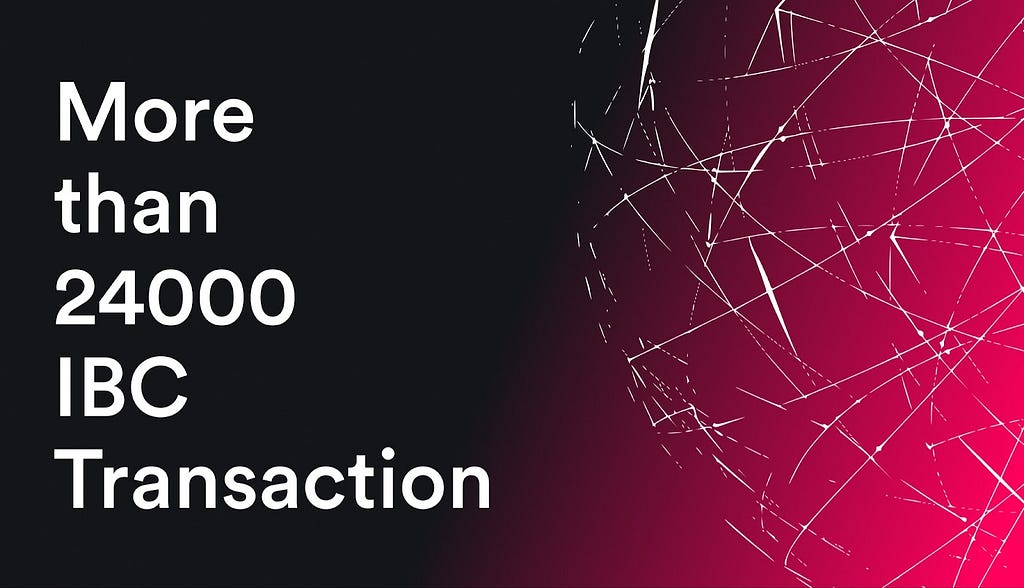
We’re also seeing some impressive activity in the $BTSG liquidity pools on Osmosis! Check out the stats below, correct as at January 11, 2022:
Osmosis stats:
Liquidity on Osmosis Pools
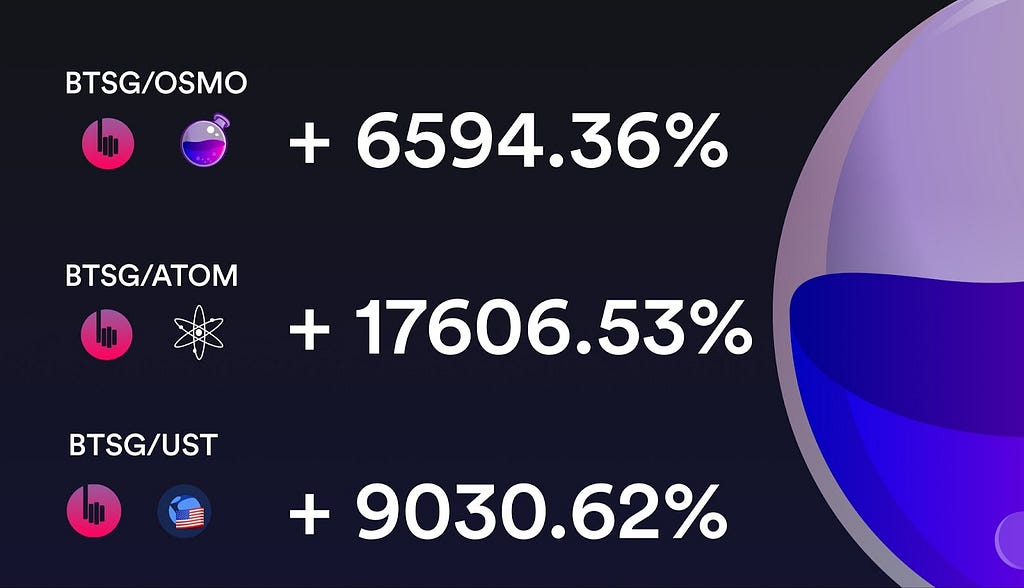
$BTSG — $OSMO
– Liquidity at 29/10/’21 — $57000
– Liquidity at 11/01/’22 — $3.815.784
– Total Increase — + 6594.36%
$BTSG — $ATOM
– Liquidity at 29/10/’21 — $13.900
– Liquidity at 11/01/’22 — $2.461.207
– Total Increase — + 17606.53%
$BTSG — $UST
– Liquidity at 25/11/’21 — $22.600
– Liquidity at 11/01/’22 — $2.063.519
– Total Increase — + 9030.62%
We hope that this article has answered your most burning questions following the $BTSG airdrop! We’d like to send a massive thanks to the whole community for their contributions to BitSong’s growth to date, and we’re looking forward to celebrating our biggest year yet with you in 2022!
Stay connected with us! 👇
Website | Discord | Telegram | Github | Mainnet | $BTSG on Osmosis
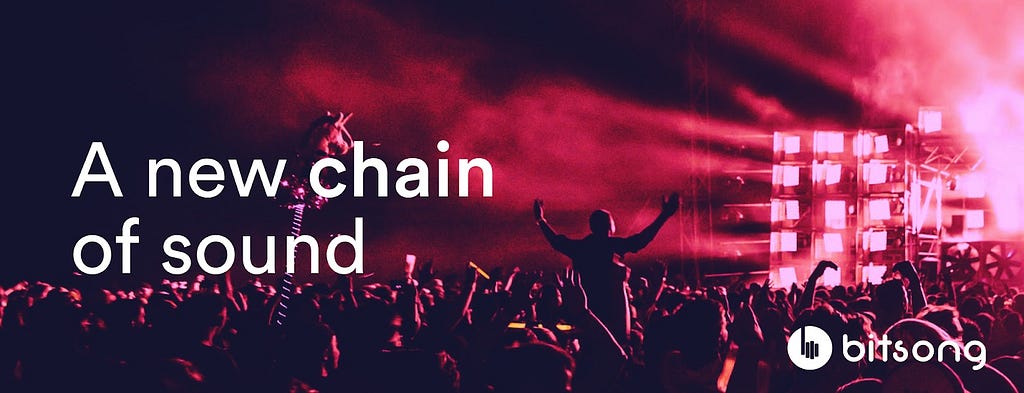
Support Us via our Sponsors
[ad_2]
By: BitSongOfficial
nftnewstoday.com






